It’s been almost a year since the LifeBeam SMART helmet hit the interwebs via a Kickstarter crowd-funded effort. Since then they’ve iterated through prototypes, status updates, and then ultimately a few months back – delivery of the actual product. It would be the first ANT+ enabled heart rate (HR) sensing cycling helmet (perhaps the first HR helmet at all for that matter). They’d also be simultaneously introducing a Bluetooth Smart version as well. Both options were set to allow you to broadcast your HR straight to compatible devices (such as a GPS bike computer or phone), without the need for a HR strap.
I got the unit I paid for earlier this winter and have been using it on all my rides since. Yes, even some of my indoor rides. I’ve got tons of data, from cold days to hot days (such as recently in Florida). And from dry days to very wet days. Lots of sweat indoors and no sweat outdoors. In the course of that I’ve been charting the data against one or more additional HR monitoring devices on all these rides, allowing me to see how well the unit actually performs. Obviously, accuracy is the most important thing here if you’re going to pay extra for such a device.
So with that, let’s dive into the whole kit and ultimately whether or not I think it’s worthy of a ride.
Unboxing:
If you were shopping in a local bike shop, you’d likely not even notice the fact that this helmet was terribly different than any other. From the outside, the box looks basically like any other helmet box – minus the addition of the little pulse-looking graphic on the front.
Most importantly though on the front is the tiny little ANT+ symbol, which indicates its an ANT+ device. Should you have bought the Bluetooth Smart variant, you’ll find that logo instead.
Unpacking the box you’ve got the below collection of goods. First is the Lazer Sport GENESIS helmet, which the electronics were fit into/onto.
Then there’s some paper manual stuffs, a USB charging cable, tiny adjustment pads, and a handy little carrying bag.
Here, the micro-USB cable. It’s the same as almost every phone cable on the planet these days except iPhone’s:
And the manual, indicating the different LED lights. Ultimately, all you’ll really need to know is that blue light on = helmet on, blue light off = helmet off.
As noted, the helmet includes a carrying bag – which is a nice gesture. I’ve found it’s pretty durable for travel though without the bag, as I’ve attached it directly to the outside of my backpack on a recent trip to the US, which includes all assortment of planes, trains and automobiles – with the thing bonking around off various objects while strapped to the back.
Inside the helmet you’ll have a few labels. The ones below on the left side are less important:
However, the ones on the right side are fairly important, as it includes the CPSC safety label. Without said label most races won’t let you participate. This is especially true of triathlons that might check such helmets (officials only check aero helmets, but sometimes if they see something out of the ordinary, they’ll check it too).
At the very front is the tiny heart rate sensor. But I won’t get too far ahead of ourselves yet. We’ll get into that in a second.
Lastly, when it comes to the weight of the helmet, I measured it at 409g. For comparison, my other helmet (without any ‘smartness’ to it), came in at 220g. The Girl’s helmet (which is a smaller size), came in at 272g.
Despite being a fair bit heavier, I really didn’t notice the weight. Ultimately, we’re not talking a ton of weight in the grand scheme of things (though I definitely realize some cyclists are very focused on helmet weight).
With all the contents surveyed, we’ll go and get into the basic day to day use of the unit.
Basic Operation:
Because the the helmet does have electronics within it, it does need some sort of battery. In this case, it’s powered by a USB re-chargeable battery that has a small USB port on the back of the helmet protected by a rubber door. As noted above, the cable is a standard micro-USB cable and can be plugged into either a computer or any USB outlet you’ll find.
The battery is designed to last 13-15 hours between charges. And though I didn’t have any 15 hours rides to validate that, I never had an issue with the unit not having power (and I recharged only about once every 1-2 weeks).
Inside the helmet you’ll see a few tiny wires running from the battery compartment in the back to the sensor in the front. These provide power and the HR data to the communications transmitter in the rear of the helmet.
While I didn’t attempt to remove the entire wired setup (it was firmly affixed), I do know of at least one reader that was able to successfully remove it and ‘re-install’ everything into a different helmet (with a bit of modification). Obviously, not something you’d do over a coffee-break – but within the realm of possible for the more DIY geeks.
For me, I just stuck with the helmet as-is. In doing so, I used the little scrolling nob on the top to tighten it down to my head. You can use this to tighten/loosen the helmet inside. Also, the chin-strap is exceedingly long, so you can trim that as well (like most helmets).
When it comes to the operation, everything is controlled by the rear pod. This is where the USB port is as well as the power button. To turn it on you simply hold down the button below the blue light bar for a few seconds, and it’ll chirp that it’s on. To turn it off, you do the same. The unit will automatically go into a power saving mode if not used for 10 minutes.
The blue bar on the back slowly glows on and off, indicating the helmet is currently powered on.
I found it took about 5-10 seconds for it to find my heart rate upon putting it on – typical for most optical sensors. Once it found my heart rate, I was good to go.
When it comes to the optical heart rate sensor, it’s situated on the front of the helmet, just at your forehead. This measures blood-flow and is able to produce a pulse reading. The company actually started off doing helmets for fighter jet pilots and astronauts with the same technology. Despite what The Girl sometimes thinks (or wants) though, I’m not going to the moon anytime soon. But, the technology thus far appears to work equally as well here on earth (as I detail in the next section).
Unlike most other optical sensors however, you won’t actually see any green (or yellow, or red) light emitted visually from it. It just looks like above, all the time. The underlying sensor will ultimately be seen in other products as the company has recently signed deals with a number of other entities for placement of the sensors in 3rd party products.
Connected devices (ANT+ or Bluetooth Smart editions):
The singular reason you’d buy the Smart helmet over other helmets is because of the heart rate sensor connectivity. It should go without saying that if you don’t plan to use such connectivity, you should close this browser tab now and go onto something more productive…like watching YouTube.
The helmet comes in two flavors: ANT+ or Bluetooth Smart. The two dominant low-power wireless transmission protocols used in sport devices today.
ANT+ is used in all Garmin devices, as well as Timex, Magellan, Suunto and a slew of others. Bluetooth Smart meanwhile has predominantly been used connecting to mobile phones – but as of late some newer devices are indeed supporting it (like the Polar V800 and V650, and TomTom watches). On the ANT+ side, it’ll work with any ANT+ device that’s capable of utilizing heart rate. And on the Bluetooth Smart side it’ll work with any app that’s capable of Bluetooth Smart HR profile reception (i.e. Strava, MapMyFitness, etc…).
LifeBEAM (the company) plans to offer a dual-protocol version in about two months, which would be inline functionality-wise with what most heart rate sensor related companies are doing these days. This would transmit on both ANT+ and Bluetooth Smart concurrently, so you don’t have to buy one version or the other.
Since I bought the ANT+ edition, let’s focus on that. I suspect that as it stands today the majority of cyclists would likely buy the ANT+ version since said majority of cyclists interested in this product would probably have a Garmin GPS bike computer (or other ANT+ enabled cycling unit).
To pair with my Garmin Edge unit, I simply went into the heart rate strap pairing menu and told it to search for the sensor. A few seconds later it found the helmet and then I was able to validate the ANT+ ID displayed as well:
From there on out it’ll automatically be paired for future rides, and above, you can see my heart rate. Of course, you can display your heart rate in BPM or via zones, depending on what your specific cycling unit supports.
Optical HR Accuracy Geekfest:
Of course, no amount of pretty blue lights mean anything if the unit actually doesn’t measure heart rate accurately. Thus, I’ve done my usual job of recording rides with multiple heart rate devices to validate accuracy. These devices include both traditional HR straps (ECG) as well as as other optical sensors by other companies. While I have months of data, I’ll just boil it down to a few random snippets to demonstrate what I’ve seen.
Ride A:
This was actually a ride from just last week in 80°F Florida (with lots of sun, which can sometimes be an issue for optical sensors). As you can see the numbers aligned spot-on against not only one strap, but against two other optical units. I saw a brief excursion of the Scosche unit (that blue spike), which is interestingly the only spike I’ve ever seen with that product in running or riding.
Ride B:
This was a mixed city ride and park ride, thus with lots of stops and starts – with the middle section being loops around a park without any cars/traffic/stops. As you can see, things track very closely. There appears to be one point in the first few minutes where it diverges briefly when I increase effort quickly, and then the same about 1/3rd of the way through for a few seconds in delay. But otherwise everything tracks my increases/decreases in intensity quite well.
Ride C:
In this ride I actually drove to a park where I do loops on closed roads and then proceeded to ride the loops. Thus why the effort is quite smooth. I see that the HR strap and the helmet tracked quite well, with the Mio Link having a bit of difficulty in the first 90 seconds and then locking in and matching for the remainder of the ride.
Ride D:
In the below ride, which happens to be a trainer ride, I did a few short high-intensity intervals in the middle of it, causing my heart rate to quickly rise and fall. Interestingly, I saw a bit of a delay in this activity – which I hadn’t seen at other times. Note that the heart rate data is captured by all devices at once, so it’s not a case of two sets of data being offset.
This really amounts to just a couple of seconds of delay – and is something I hadn’t seen with any of the other test runs I did, so I think it’s just a one-off oddity.
I do want to point out that The Girl did wear the helmet for one indoor ride testing data. But ultimately the helmet was too loose on her (since it didn’t go small enough), and as a result I saw significant variations in data in that case. Given that any HR monitoring device requires a proper fit – this makes sense.
In summary, I’m just not seeing any issues with the accuracy of the sensor used here, for me. Nor am I seeing any issues with weak signals or the like from the ANT+ transmitter (occasionally a problem on some sensor devices). Overall, things look very solid.
Comparison Charts:
Starting with this review I’ve introduced a new category into the product comparison chart – the heart rate sensor category. This category includes a combination of leading edge heart rate devices that have some form of ‘unique’ aspect to them. For example, this helmet, or other optical sensors. Or HR straps that transmit underwater, or capture running metrics.
To that end, the below chart is only a handful of products I’ve added to that database. Thus, if you want to mix and match other products you can use the full product comparison tool here to do so (it allows you to add more products than seen below).
| Function/Feature | LifeBEAM Smart Helmet | Wahoo TICKR (Original) | Mio Link | 4iiii Viiiiva |
|---|---|---|---|---|
| Copyright DC Rainmaker - Updated November 26th, 2021 @ 4:39 am New Window | ||||
| Price | $249 | $49 | $79 | $79 |
| Product Announce Date | Mar 2013 | Jan 6th, 2014 | Jan 6th, 2014 | Jan 7th, 2013 |
| Product Availability Date | Jan 2014 | Apr 2014 | Apr 11th, 2014 | July 2013 |
| Measurement Type | Optical | ECG | Optical | ECG |
| Typical Placement | Head (Helmet) | Chest Strap | Wrist Strap | Chest Strap |
| Battery Life | 13-15 hours | 350 hours | 8-10 hrs | 200 hours |
| Battery Type | USB rechargeable | Coin Cell CR2032 | USB rechargeable | Coin Cell CR2032 |
| NFC Capable | No | No | HR Transmission | LifeBEAM Smart Helmet | Wahoo TICKR (Original) | Mio Link | 4iiii Viiiiva |
| ANT+ | Yes (specific Model) | Yes | Yes | Yes |
| Bluetooth Smart | Yes (specific Model) | Yes | Yes | Yes |
| Dual concurrent ANT+/BLE | No | Yes | Yes | Yes |
| Analog for gym equipment | No | No | No | No |
| Usable HR data underwater | No | No | Depends: If on same wrist, YMMV. | No |
| Bridging ANT+ to Bluetooth Smart | No | No | No | Yes |
| Can record activity in memory | No | No | No | yes | Additional Data | LifeBEAM Smart Helmet | Wahoo TICKR (Original) | Mio Link | 4iiii Viiiiva |
| Run Pace | No | No | No | No |
| Run Cadence | No | No | No | No |
| Run Economy/Metrics | No | No | No | No |
| Cycling Cadence | No | No | ||
| Cycling Power Meter Estimation | No | No | Can pass through ANT+ PM's | |
| Valid HRV/RR data | No | Yes | No | Yes |
| Configurable Sport Modes | No | Sorta | ||
| Displays HR Zones | No | No | ||
| Requires Bluetooth Smart Phone for Configuration | No | No | Yes (for HR zones) | Yes (for bridging only) |
| Firmware Updateable | No | Yes (iOS/Android) | Yes | Yes | App | LifeBEAM Smart Helmet | Wahoo TICKR (Original) | Mio Link | 4iiii Viiiiva |
| Can show workout afterwards | No | Yes | ||
| Can sync files/workout to 3rd party | No | Yes | ||
| More Info | Link | Link | Link | Link | Purchase | LifeBEAM Smart Helmet | Wahoo TICKR (Original) | Mio Link | 4iiii Viiiiva |
| Amazon | N/A | Link | Link | Link |
| Backcountry.com | Link | |||
Again, remember you can mix and match and create your own comparison against additional HR products not shown above. Think of it like going to the ice cream parlor and making your own sundae.
Summary:
At the end of the day, the helmet does what it says it does, and does it well. It allows you to ride heart-rate strap free while still getting heart rate data. The accuracy of the sensor technology appears solid based on my testing (and, at least, based on my body). And the build of the helmet in total feels solid and seems to withstand crappy riding conditions well.
Of course, there is the reality though that you would now have one more thing to charge. For most riders, that’d be charging it once every 1-2 weeks depending on how much you ride. I found it held a charge well, where in cases that I was travelling for a few weeks I had no problems coming back to using it without charging. And of course, if you don’t like this particular style/model of helmet, then you’re currently up a creek without preforming some helmet transplant surgery.
I’d have no problem recommending it, though, I think unless you needed it immediately it may be worth waiting until they release the new dual ANT+/BLE models in about two months – since that will make the unit effectively ‘future-proof’ in that you can choose any sports device on the market today without concern for protocols. Further, the helmet is a bit pricier than it was when it initially hit crowd-funding sites at sub-$200. Where now it’s $249US.
As always, thanks for reading! And if you have any questions – feel free to drop them below!

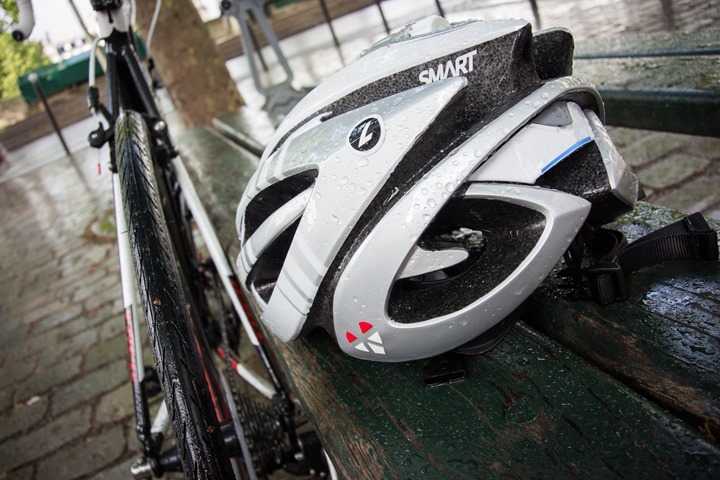
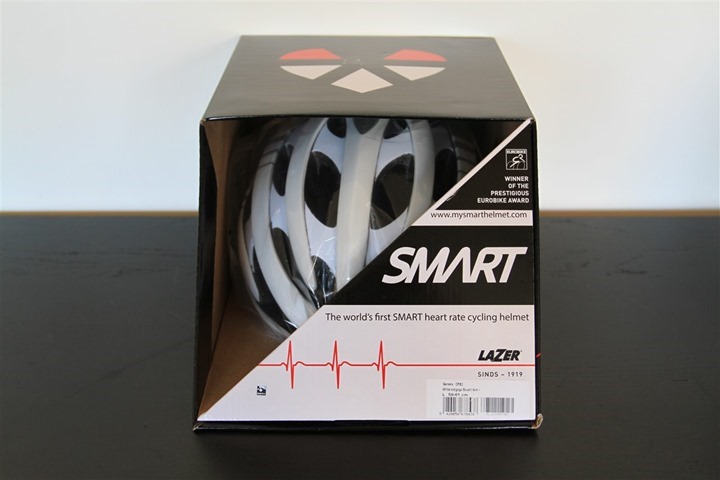
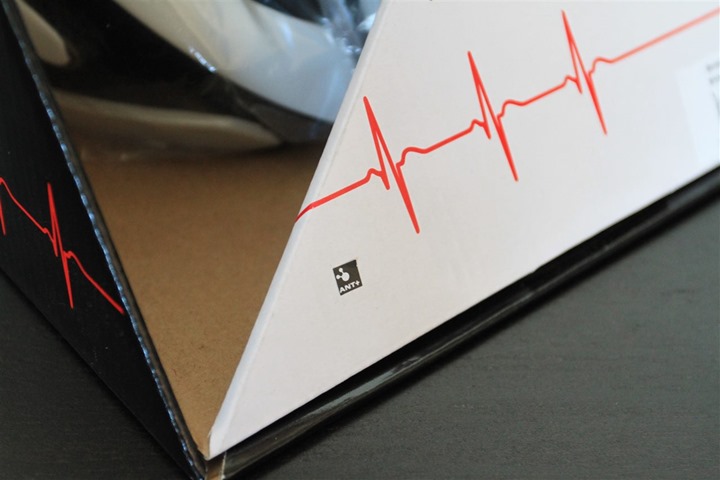
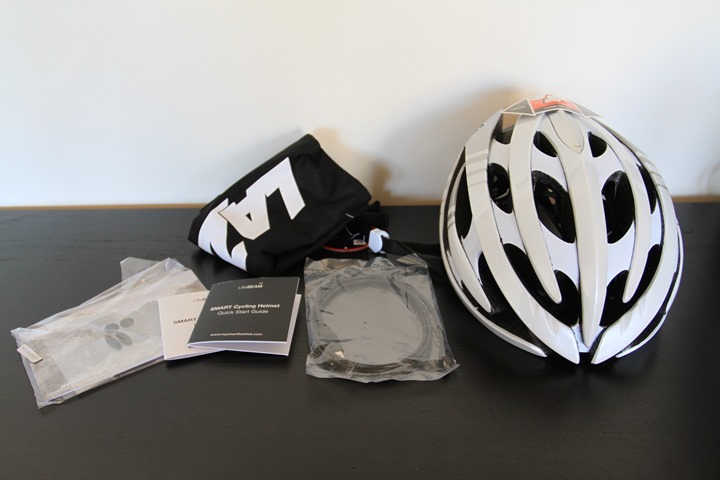
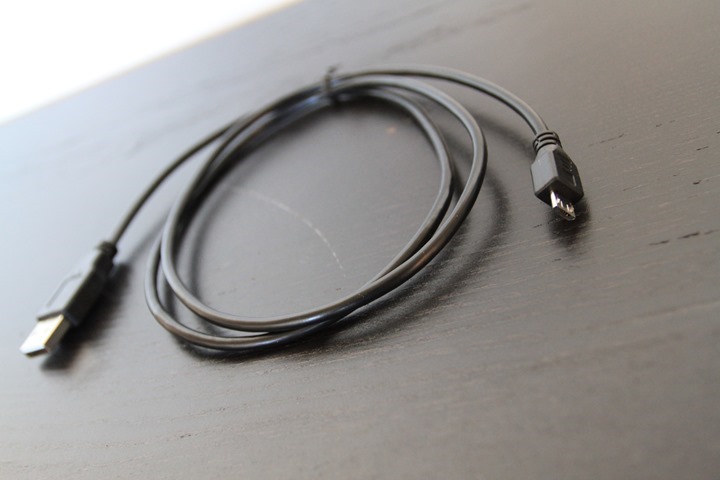
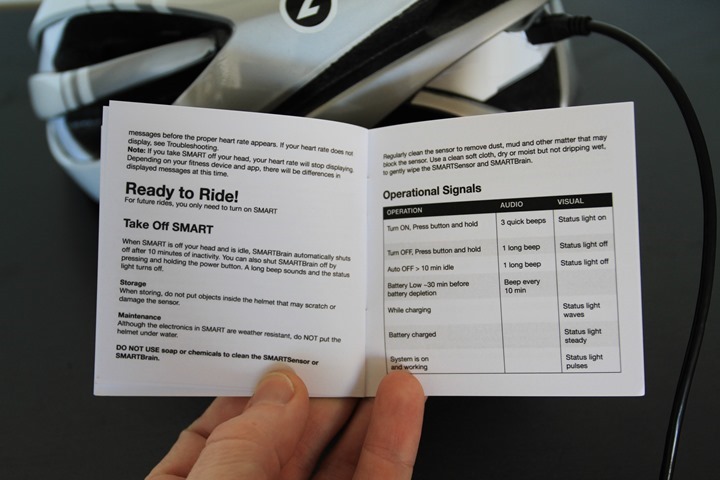


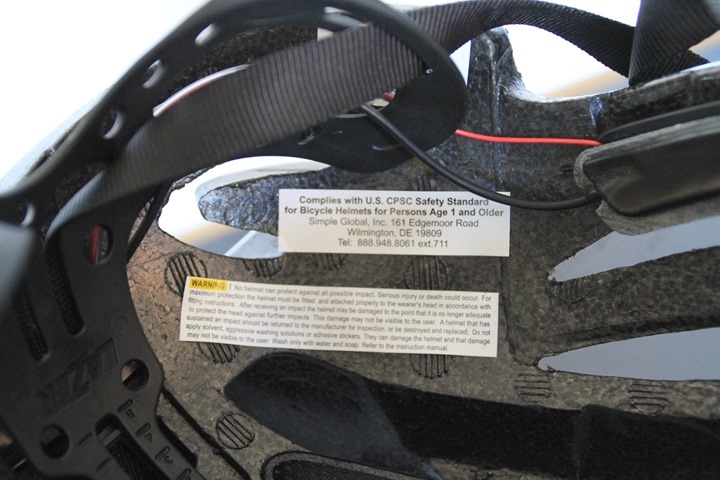
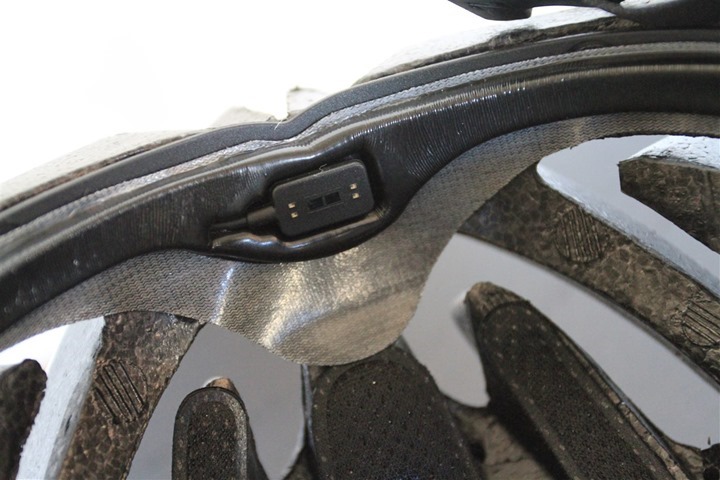
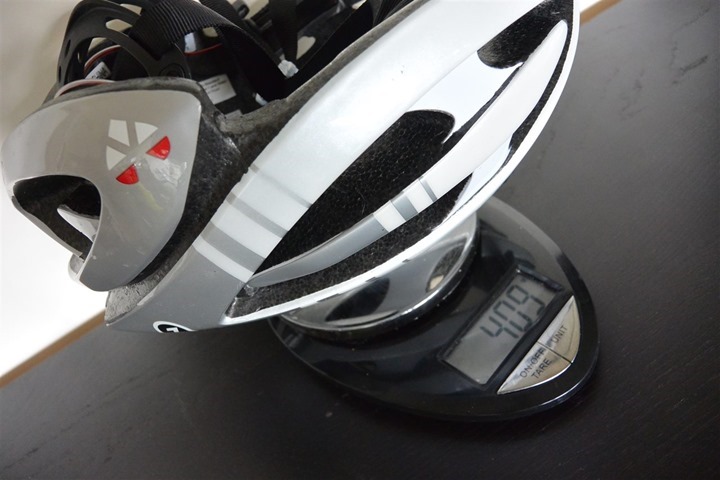
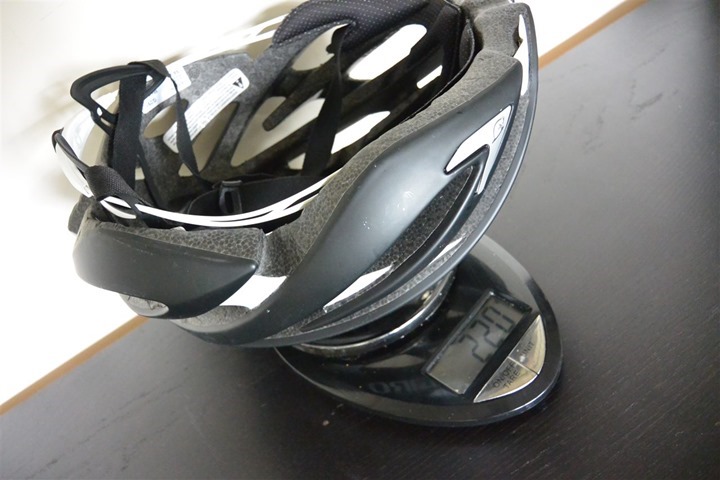
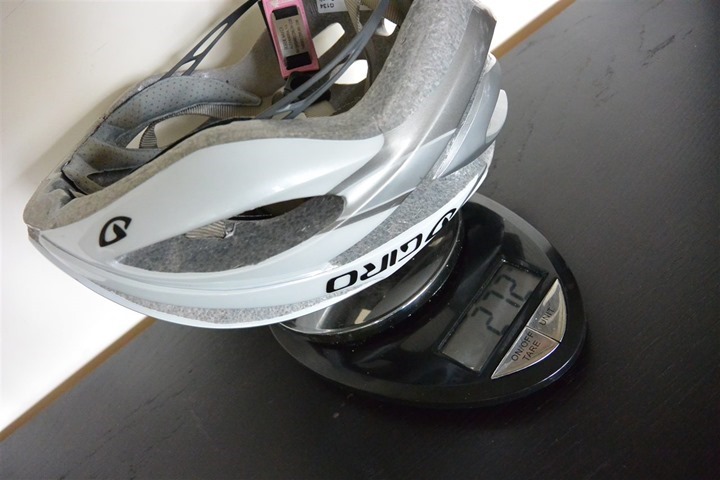
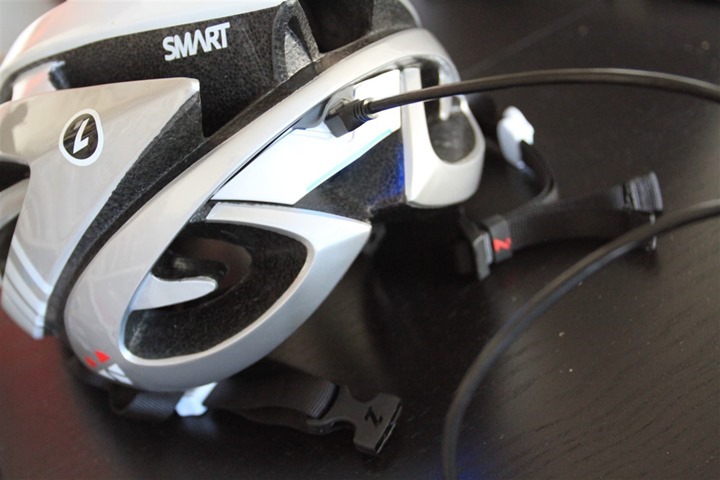
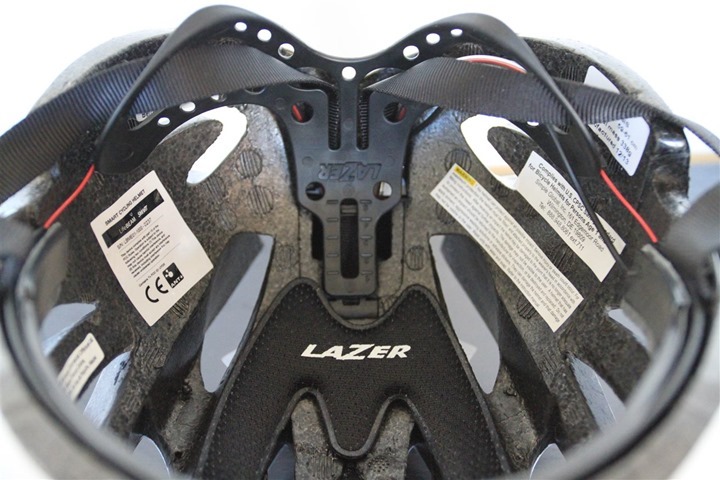
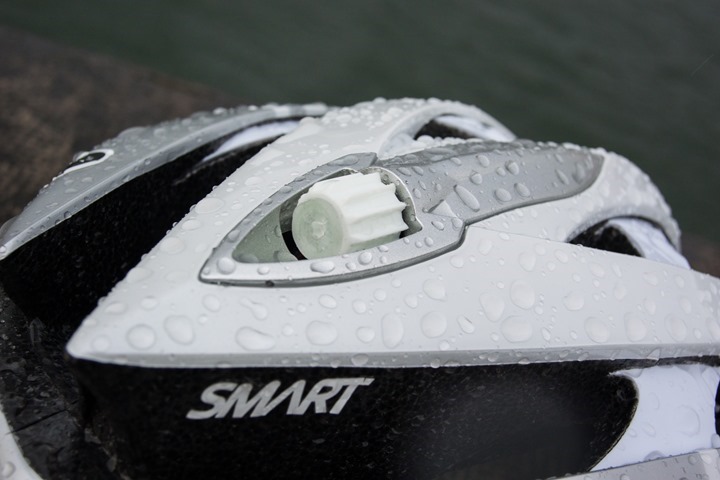
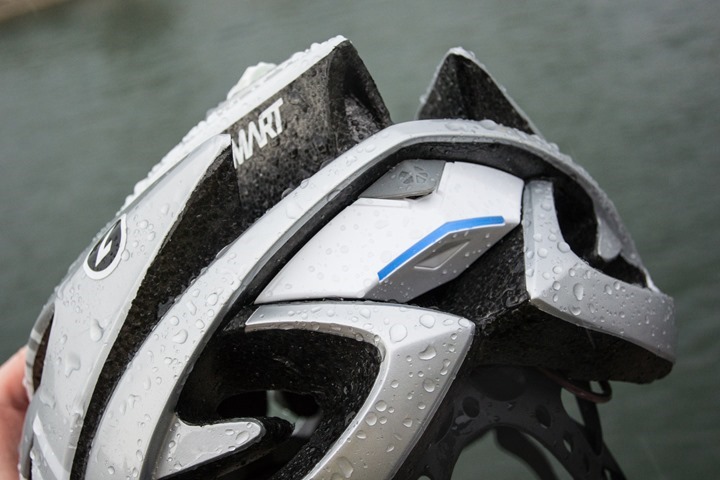
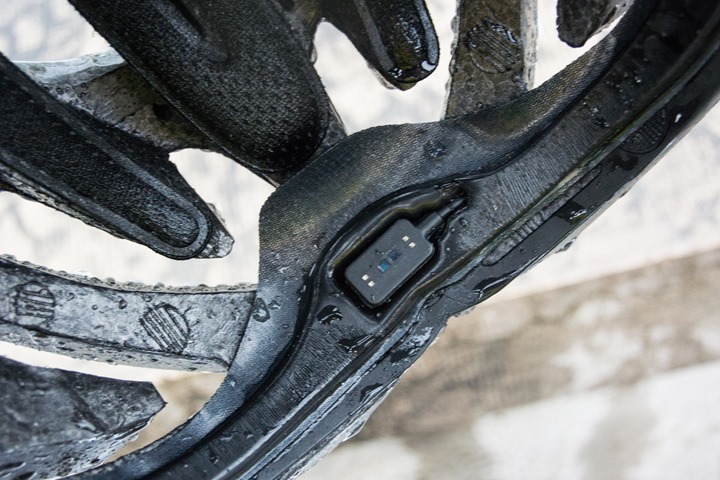

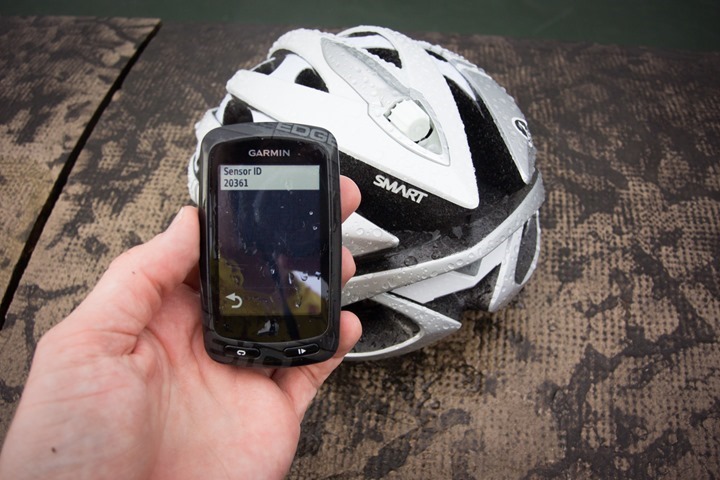
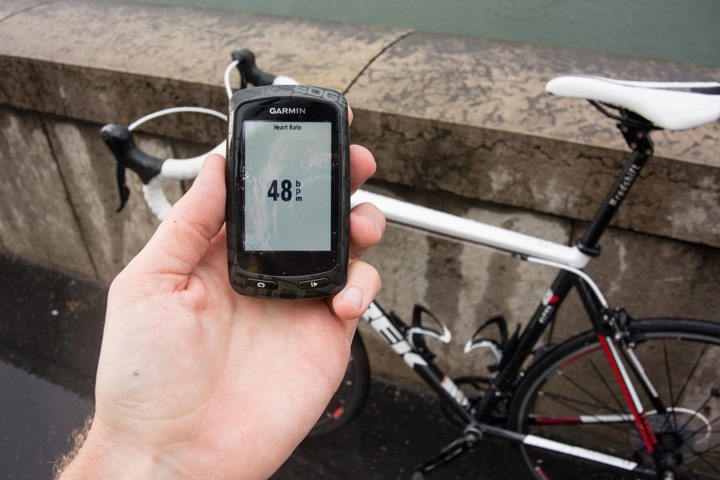
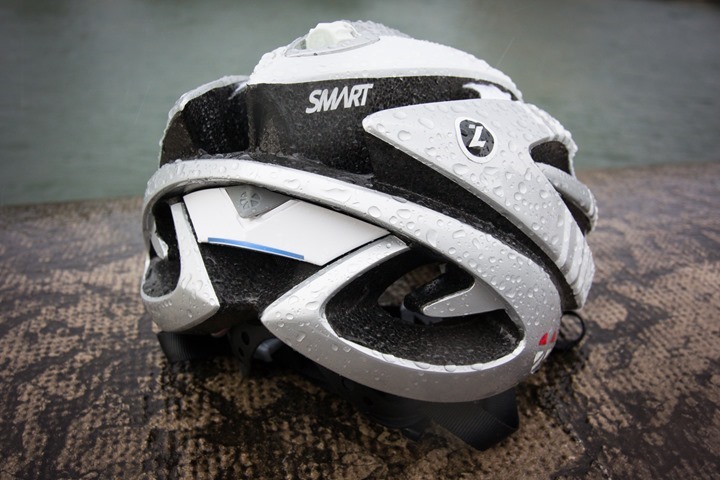




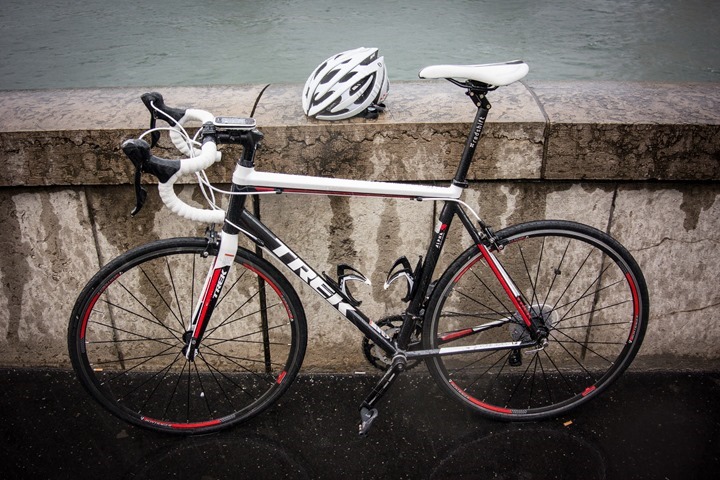
















Now that is a cool bit of kit.
Thanks for the review, Its a product I’d be very interested in. It has the CE mark so ticks all the box’s in terms of being a safe helmet but visually at least I’m a tad bit concerned looking the size of the ventilation gaps/holes that it could provide enough heat evacuation so as not to over heat on a long hot ride. Also with that in mind how affected (if any) would the optical sensor be when combined with a sweaty contact? Thoughts appreciated.
No problems with sweat. That’s one of the main reasons I did indoor workouts with it, was to sweat it up (I lack AC or a fan most of the time). So I’m drenched.
Hey Scott, just as a heads up: the CE marking is not designating any kind of safety – it is just a self-certified marking by the manufacturer, stating conformity regarding free movement and sale of the product throughout the EU. It´s rather about trade, not technical and safety standards.
Shion, the CE stamp on a helmet actually does indeed indicate that it passed certain safety tests. The stamp is also required to be sold in Europe.
Just confirming that this is incorrect: The CE mark *does* mean the helmet meets the EN 1078 safety standard.
See link to xsportsprotective.com for the details.
Heat is not the problem….I use the helmet in Israel….temperature gets up to 30 degrees Celsius….(and higher , but than the bike is inside…..
Going up the hills you for sure can sweat here.
The helmets are made by Fazer…one of the best brands in the world…
Ray,
Very interesting and pragmatic integration of two pieces of equipment – particularly, if you are in the market for a new helmet.
Any statements relative to the helmet’s comfort?
Also, the slight adjustment to picture of the helmet weight is that you also get to drop the weight of your HRM and strap, which is probably is 40g-50g range. And, I’ve generally found riding with a HRM strap to be a bit of an annoyance.
Look forward to your thoughts…
Drew
I found the helmet quite comfortable. Then again, I tend not to be bothered as much by comfort as some people, so perhaps I’m not the best subject there.
I’ll continue using it as my primary helmet, simply so I don’t have to deal with a chest strap on rides – especially cooler spring/fall rides where sometimes the chest strap is finicky but I’m wearing lighter clothing (versus heavier stuff that causes more sweat and reduces issues).
I’m the one who transplanted the smarts of the helmet into a different helmet. I used a Giro Aeon helmet, mostly because I couldn’t stand the Lazer helmet. I just couldn’t find a comfortable adjustment for it. I love the idea, but find it sad that you are forced to use a specific brand of helmet. Considering there isn’t much to the system (basically the sensor/padding strip attached with Velcro, and the smarts in the plastic enclosure on the back of the helmet), I’d like to see Lifebeam come up with a “guts only” version. Until then, I’ll ride with my Frankenstein Giro Aeon!
The other concern I would have is if you crash now you have to buy a whole new helmet again. Additionally if you are riding in cold weather and put a liner cap under won’t you be blocking the sensor?
@Jason K @Euen Henry
Great Question
LifeBEAM follows Lazersport Crash Replacement Policy and works closely with them on crash replacement claims. Basically helmet can be replaced with in three years of purchase at a reduced price if it was involved in an accident.
We hope it never comes to this though!
Contact our support team for more details
Ride Safe,
The LifeBEAM Team
support@life-beam.com
As always, another great review. Thanks for your thoroughness and beautiful pictures!
It might shave a little time off of T2 as you’d no longer need to remove the helmet in order to have HR data for your run.
The links in the table dont work, they redirect to link to dcrainmaker.com etc. (for all 4 products)
Also it looks like the Wahoo Tickr was available some 8 months before it was announced :)
Does it have to be on tight? I’d imagine if you frown/have wrinkles/squint your eyes in the sun (Arizona here) it might lose alignment..
Strange, not sure why they were doing that. Simply reset the links in the database and they appear all good now. Thanks for the heads up!
As for tightness, no, just normal tight. Same as I’d always wear a helmet. You don’t want it bobbling around your head for safety reasons, but it feels the same tightness to me as my other helmet. Just comfy.
It is very interesting, hover 80% of the time I cycle with a buff under my helmet and below with a windstopper hat. This would make this type of sensor useless. Unfortunately, though the idea is very nice. This of course varies per person.
I’m also used to ride with a cycling cap or bandana. Since I purchased the Lifebeam Smart helmet I simply pull my headwear a bit up and let the optical sensor touching my forehead. Works great for me!
My LifeBeam helmet does not work nearly as well as yours, sadly.
When I first turn it on, it works for a while, but the heart rate will then begin to drift
upwards or downwards, where it will stabilize and not change significantly
even despite significant changes in actual heart rate, effort and position of the helmet.
The only thing that seems to work is a reboot of the helmet (turning
the helmet off and then on). This however, only fixes the issue for a while, as the drift will again appear after a time.
The helmet is the correct size, and I’ve been experimenting with securing the
helmet more or less firmly, trying to get it to work, but this has not helped.
In fact, securing it tightly has only given me a very visible mark in the skin of my forehead in the shape of the sensor, which lasts for a quite a while after a ride! Securing it as tightly as possible gives me slight headaches, so I’m thinking the sensor should work with a fit closer to normal.
It’s indeed excellent for the initial period, when it works. I just wish it worked for me all the time!
“My LifeBeam helmet does not work nearly as well as yours, sadly.”
This was also a test of the Mio Link, apparently. And Ray’s Link tracked beautifully, whereas other people have had more mixed results with the optical sensor. I’m wondering if Ray get’s sent units that are higher performing (not uncommon with normal component spec variation). Hand picked ones.
Perhaps Ray is going to need to start ordering his products under a fictitious name. (although – it would make it hard for him to get his hands on the pre-productions units)
I have the same issue Snusmumrik. My life beam helmet is very inconsistent. It worked great at first, but now It will work sometimes and won’t at others The heat rate will either be super low or way to high and will drift. I was going max heart rate the other day and the helmet was only reading 71 BPM. A reboot will sometimes fix it, but it will slowly drift over time. It’s worse than a heart rate strap :(
I’m done with mine and will probably look into a mio link.
Mine has been working flawlessly with no drift whatsoever. I wonder is skin color, blood pressure, or other variables can affect it??
Well, except my Mio Link production ones “hand-picked” and send to me don’t really work well either. So I’m in the same boat as others. In the case of the Smart helmet, it came from the same production batch – they just re-directed shipping.
Just in case you’re curious, I do actually get production units out of retail locale – without any knowledge of my name. ;) Obviously, as you pointed out that doesn’t help the pre-prod scenario, but I think the Link is the first time I’ve really seen such cases where it’s just being troubling.
I got the link and have been pretty disappointed with it so far after your positive pre-review look at it. Do you think it’s a firmware or hardware issue with the production units? Have you heard anything from Mio about the issues?
Thanks
I’m reasonably certain it’s firmware. They cut the power transmission output to try and get more battery power. While that wouldn’t affect the readings piece (in theory), it’s definitely affecting my ability for units to pick it up.
They have been talking to me, as well as actively responding to comments. It sounds like a firmware update is in the works.
Awesome. Thanks
@Snusmumrik @Drew220
Thank you for your feedback.
We are sorry to hear that you are experiencing heart rate inaccuracies.
If you haven’t yet contacted our support, please do, so we can work on a solution ASAP.
It’s important to mention that customer satisfaction and product feedback is our top priority, so feel free to contact us with every little problem or feedback in the future.
Ride safe :)
The LifeBEAM Team
support@life-beam.com
I’ve now been in contact with LifeBeam regarding the drift and inaccuracies in heart
rate readings that my helmet exhibited.
It appears that I’ve simply been unlucky to get a helmet with a malfunctioning sensor, and after determining this, LifeBeam arranged for a new helmet to be sent.
They were very proactive in seeking out a solution and even set up a video call to resolve the issue. In fact, I have never experienced this kind of dedication in customer relations in dealing with any company before.
I’m now looking forward to soon getting a working helmet!
Interested if the sensor works well if you’re wearing a skullcap under your helmet?
No, since it requires direct skin contact for the optical piece.
Ray
Thanks for your in-depth review of all the stuffs. I really appreciate the kind of effort you put into.
I am eagerly awaiting for your full review of mio link. Based on your review I’ll decide whether to buy the same or to go for traditional chest strap.
thanks again
N Ray
Ehhhh one more thing to charge? I think I”m out. But this is a great great review, I love it :)
Very nice writeup! Impressive accuracy!
Does it work when you run as well, or just biking? Do you know if this Lifebeam group is using PerformTek (the stuff that Scosche, Intel, and LG are using)?
I didn’t try running with it unfortunately. Though, I see they do sell a headband of sorts.
No, the technology is developed in-house and is not from Valencell/PerformTek. Which means there appears to be three companies that are able to correctly get HR data during athletic performances (with products on the market):
A) Mio, with Mio Link/Alpha (underlying sensor from Phillips)
B) Valencell, with Scosche, iRiver, Intel, and a few others
C) LifeBeam, with Smart helmet + other upcoming 3rd party products
There are other companies working on athletic focused sensors, for example Texas Instruments. But I’m not aware of any specific 3rd party product that’s using it.
With this being a safety helmet what happenes if you crash and damage the helmet. Is there a discount replacement policy. If I crash with my chest strap on, no problem. @ $250 not cool.
@Euen Henry
Please See the answer to Jason K regarding Crash Replacement Policy above
Ride Safe,
The LifeBEAM Team
support@life-beam.com
Completely off topic, but do you really leave the Switch Aero seatpost in aero position like that while riding road, without your clip-ons on? O.o
-Ed
Not normally. I had gone out for a short test ride and had removed the bars and forgot to swap the seat-post back.
Hey Ray,
No Love for the Cycle Ops powerCal in the HR database? (or in the power meter database for that matter?)
Ask and you shall receive. Just added to HR database. I’ve got a small list of ones to add in over the next few days. Just started with the most popular ones.
You’re too quick to respond. You sir are a gentleman and a scholar. Thanks for your reviews and insights.
btw I recently purchased a Fenix 2 and gsc10 using your Amazon link (which worked out great because I had a bunch of Amazon gift cards burning a hole in my pocket). Can’t wait till it arrives.
Thanks for the support, I appreciate it!
Thanks for your review! Looks like a cool product. I don’t like HR straps because they leave a red mark across my chest. I think The Girl has the same problem..?
Love your reviews. Have your amazon link set up in my bookmarks so you should get something from my immense Amazon habit…!
Thanks for the support via Amazon shopping!
What a professional review!! Kudos!! I am definitely going to order their next version
Thanks Rainmaker for the great review!
I’m using the Lifebeam helmet for 2 months and very happy with it! Beautiful design, works like a magic!
I was planing to buy a second helmet as a present for my wife (she hates the chest strap!) but since you mentioned the 2nd generation with dual connectivity (ANT+ & BLE) I’ll wait 2 months for that!
48……. 48….. your heart beat goes as low as 48!!! You are one fit cookie. The next time my heart beat goes that low, they’ll be burying me.
:-)
I had to get a TomTom to get a reading of the heart beat for the Bluetooth version as the iPhone did not work. It is working now for some weeks
Mine is on the Garmin with ANT+ and this works fine…….and….as I
challenged Lifebeam how accurate it is….I had to check it and bought
separately a Polar, with belt around the breast…..and I must say…..Lifebeam
was very correct!!
Due to refreshment time etc there may be a difference sometimes of 1 or 2
beats, but for the rest it gives the same data !! (which seems to confirm
that I have 1 heart and that the beat is equal in my head as in my
chest….;-)
I have had a few bike helmets by now (2 were severely damaged in some ”
accidents” so needed to be replaced…..but I must say this is a very good
and convenient helmet.
Would I recommend this Lifebeam helmet to others….. Yes, absolutely !!
Ok, it’s close enough but not as good as ye-olde-belt, it’s not exactly cheap (VS HR belt), it requires USB to charge (VS a simple coin cell), it’s yet another thing to remember to keep charged (again VS coin cell), when the LiIon battery goes belly up you scrap it, it doesn’t work if you put anything under your helmet, be it summer or winter, and on top of it, if you crash you’d likely be replacing the whole thing.
I’m not quite positive this is the silliest placement for a heart rate sensor I’ve ever heard of, but it certainly comes close. Even for those who hate the HR belt with a passion, there must be a better solution.
Anyone who doesn’t think this is a gimmick, I have a dual mode ANT+/BT Smart power meter bridge I’d like to talk you about. It even comes with an iPhone App to roll it up and down.
@ Paul I’m nowhere near as fast as Ray, yet my resting heart rate is around 40 (and on occasions I’ve gone even lower). On the flip side, it never went very high either, 182 is my recorded maximum. When fully detrained it goes back up to around 60.
Not that this means anything on its own, and being fit is about so much more than your heart rate number in any given condition.
If your main activity is biking, why would this be a gimmick? Always gotta wear helmet, one less thing to bring along.
Seems like a perfect replacement for a chest strap. You mentioned it being another thing that cyclist would have to charge. I already am charging lights, my garmin, cell phone, girl friends lights and cannot imagine what your charging station looks like. Any good solutions to charging many things at once?
I’m sure you have seen many pictures of what happens to a helmet in an accident.
Does the company offer any kind of warranty for accidents?
Or if the systems survive a crash and the helmet does not, can they re-install the system in a new helmet?
@Jacob
Hi Jacob,
No worries, see the answer to @Jason K @Euen Henry from May 8.
Ride Safe,
The LifeBEAM Team
I noticed that LifeBEAM is now selling a hat with a sensor. Ray, any chance for you to get your hands on one and review it?
Hmm, I have their new helmet that just came in, but no hat. I’ll poke….
link to life-beam.com
(Guessing some people may wonder where to see it)
The hard part for a hat that high in price is knowing how comfortable it is as it’s a one size fits all hat. Plus they don’t say which ant+ profiles it broadcasts. (Does it do a footpod to transmit cadence?)
@Eli
Hi,
We have a 30 days return policy, so you can purchase the LifeBEAM smart hat and decide after you try it on.
You do not need to have a footpod or any other device on you. All you need to do is turn on the LifeBEAM smart hat and it will transmit your heart rate & cadence via standard ANT+ and BLE to any compatible fitness device or app.
You can check out more details at support.life-beam.com
How does one receive warranty service in the USA? According to the booklet I received when I purchased my smart helmet you can go to http://www.mysmarthelmet.com. However, that appears to be a dead link now. I have a problem with the covering of the hr sensor. It has all disintegrated and now the bare circuit board is left to press on my forehead. Less than comfortable.
@Bruce
Hi,
We moved:)
Our newly designed website is at: http://www.life-beam.com
You can contact us regarding any issue at: support@life-beam.com
Thanks, I’ll write them.
This is a great idea for a product, but I had to return mine for my money back. I was getting inconsistent data and didn’t like the imprint left in the forehead either. The helmet is also heavy, but like a previous comment suggested, you are replacing a heart strap, so maybe the weight difference is minimal. However, the additional weight is on your head, which could cause neck strain over a long ride. I also like to wear a cap under my helmet and would not be able to do that unless I could push it back enough to make contact. Another item to charge is also an inconvenience.
I all, this was a really bad experience for me. It took them well over a month from the time I ordered the helmet to when it showed up, but I was happy with the assistance I received from the life-beam support team in the feedback of the problems I was having once I received it.
HOWEVER, I was asked to ship the helmet back to Israel from the USA and the shipping cost for a package that size overseas was high (about $84). They only reimbursed me $40 for the shipping cost. I was not told that before they asked me to ship it, only that they would reimburse my shipping costs.
Needless to say, I am not happy about the outcome.
@Gary
Sorry that you did not like our product, your helmet arrived to our laboratories for examination and we did not found any thing wrong with it.
According to our return policy:
“Returns are free if the product was delivered either damaged or defective, otherwise customers are required to cover the cost of return shipping.”
We wanted to help and reimburse at least a part of the unexpected shipping expense that you carried without letting us know before regardless of the return policy.
We hope to see you in our customers lists in the future.
Feel free to contact us at support@life-beam.com if you feel that this issue is not closed.
Regards,
The LifeBEAM Team
Hi,
I’ve purchased a LifeBeam helmet on ebay and received it last week. It works with my IPhone and Runtastic Road Bike. There is no ANT+ nor Bluetooth sign on the Box. It just says: Compatible with most Apps and devices. Does this mean it has ANT+?
MfG
Thomas
@Thomas
Our second generation helmets have both ANT+ and Bluetooth capabilities, which means that you are right and able to connect to both display devices simultaneously.
Example: connect to Runtastic with your iPhone and your Garmin Fenix 3 via ANT+
Feel free to contact us at support@life-beam.com if you feel that this issue is not closed.
Regards,
The LifeBEAM Team
Ray, nice review. Does the Lifebeam HR sensor record R-R data?
LifeBeam has been working with me very well to replace my sensor unit that suddenly stopped transmitting data. All of my devices could connect but then a heartbeat would not register. I sent the unit back and as soon as shipment was confirmed they have sent a replacement although I have not received it yet. This process has taken several weeks so it is an inconvenience
Maybe someone would be interested :) : link to youtube.com
Stay away from LifeBEAM products, their concept of customer service is to only care about new products and new customers.
I purchased three LifeBEAM helmets and have had been using one of them for a while now and the HR monitoring functionality is intermittent at best, and on most rides it only records my HR about 10% of the time. No amount of cleaning the sensor, re-positioning the helmet or any other recommended action makes any difference.
My attempt to get the problem resolved by LifeBEAM has been both frustrating and eye-opening. Firstly it took 9 days for them to respond to me and only after I posted messages on Facebook and Twitter, did they get back to me. Their reason for the delay? They’ve been busy with a new product launch – good to know existing customers are a distant second or third to potential new customers.
They have made no attempt to diagnose my issue or suggest any feasible work-around to the problem. If you read other online forums, including their web site, you will notice this HR issue is not an isolated incident. This clearly looks like they are aware of the issue and made no attempt to suggest a fix.
Their resolution to my problem? Discount on another Helmet or on one of their new products! They seemed rather surprised when I indicated I had no intention of further investing in their products when they are clearly flawed and their customer support is appalling. Their justification, hiding behind their warranty.
Take your time and read the not so positive reviews on this site, and others, and you will start to see a pattern of poor customer support and a flawed product.
Hi Sandor,
We are sorry you were not satisfied with our customer support response. We tried to offer you all that we could but due to the circumstances we did what we thought was best- in offering you a discount on a new unit or on Vi.
Sorry that you felt we were “hiding behind our warranty” but you had used the helmet for over two years and there were initially many issues even getting the helmet to you based on your location. We appreciate your business and thank you for being a past customer. Good luck on your fitness journey!
Best,
The LifeBEAM Team
Case and Point: Classic LifeBEAM response to a customer complaint:
1. No attempt to actually address the product issue and try resolve it. Warranty has expired, so we couldn’t care about a known fault in the product. Sorry sucker.
2. Your destination country shipping requirements are somehow related to your issue. Even though all we actually had to do it black out the country of origin with a black marker pen before shipping, but that caused LifeBEAM “many issues even getting the helmet to you”. So we don’t really want your business anymore.
I’m confused.
1) How long did you own the helmet before it started having issues?
2) Where did you buy the helmet, and where do you live now that’s causing an issue?
I mean, these seem like pretty valid questions.
They are valid questions:
1) I have owned the helmet longer than the LifeBEAM warranty duration, no disputing that. I contacted LifeBEAM for support on the intermittent HR issues I was facing and since also discovered this is not a problem unique to my helmet. LifeBEAM made zero effort to diagnose or fix the intermittent HR issues and went straight to offering a discount for a new helmet. A quick google search will show you this problem has impacting multiple customers and therefore is possibly a product performance issue. Hence my total reluctance to purchase a 4th helmet (even if it is discounted) when this may very well happen again. Their other alternative was a minimal discount on their new non helmet product.
2) I live in Dubai, UAE which has certain restrictions on imported goods with specific countries of origin. LifeBEAM had no issue masking out the Country of Origin on the THREE helmet I purchased directly from LifeBEAM before shipping to me in Dubai – so I am not sure why they are raising this now in relation to the product performance problem I am facing.
Based in part on the information in this review, I added the LifeBEAM Gear accessory to my Lazer Z1 MIPS helmet earlier this year. It’s a relatively new product that LifeBEAM and Lazer have made available since the above review was published. I find it to be the lightest, least obtrusive HRM I’ve ever used. It is also much more accurate than the MIO unit that I was using immediately before it.
As to the Z1, I find it to be the best fitting, easiest to adjust helmet I’ve used. It’s also respectably light and well-ventilated. Lazer in general and the Z1 in particular introduced me to the concept of integrated helmet accessories and I’ve tried them all. With the LifeBEAM and Lazer’s photochromic Magneto sunglasses, I have two fewer accessories to carry around than I did before. The Aeroshield is better than a wind cover for winter riding and it may be more aerodynamic. Finally, the Cappuccino lock is exactly as described. The whole kit is lighter than the sum of the cycling accessories they replaced. By itself, the Lazer Z1 is by far the best helmet I’ve used to date. With accessories, it has really expedited my ride preparation process.
I also had an experience with LifeBEAM support. They are based in Israel and do not offer a US toll free number (at least they didn’t at the time). So, rather than placing an international toll call to them, I used e-mail. As expected from a small expanding company, it took a long time for them to respond to each e-mail. However, they replaced the defective part with no questions asked.
I’m really pleased with both Lazer and LifeBEAM.
Love my Lazer Genesis/Lifebeam.
I haven’t seen any solutions to the “cap under helmet” conundrum, so I got my scissors out and simply cut an area of my cycling cap out where the optical sensor is. Works great . I don’t notice the exposed area because the bulk of the helmet in that area covers my forehead.
In colder conditions when I’m wearing a skull cap I simply push the skull cap back a bit to allow for the optical sensor to make contact.
Ok, this is a blast from the past thread, but does anyone have a good helmet with integrated ANT+ bike lights? I have front and rear facing lights on my actual bike, but I’ve had a couple of close calls lately with cars coming off perpendicular roads, and I’m thinking a higher light coming off my bouncing/swiveling head would make me a ton more visible…